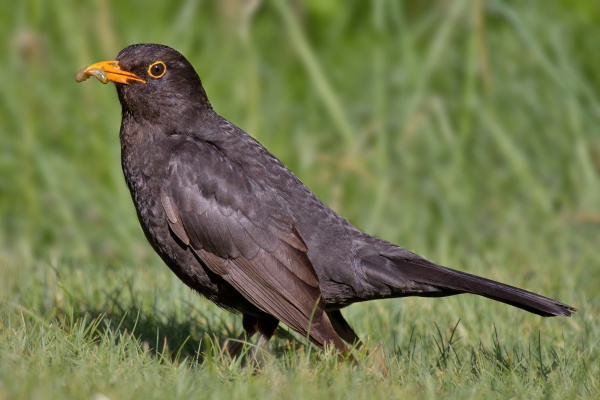Facts About Common blackbird
The common blackbird, often referred to as the Eurasian blackbird, is a familiar sight across Europe, Asiatic Russia, and North Africa. It has also established itself in Australia and New Zealand. This bird exists in various subspecies, each adapting differently to its environment—some are sedentary, while others engage in partial or full migration depending on the season.
Adult male blackbirds are easily recognizable by their striking black plumage, yellow eye-ring, and bright yellow bill. In contrast, females and juveniles exhibit dark brown feathers. Typically, these birds reside in woods and gardens, where they construct cup-shaped nests. They have an omnivorous diet, feeding on insects, earthworms, berries, and fruits.
Belonging to the genus Turdus, common blackbirds are characterized by their rounded heads and long wings, and they are renowned for their melodious songs. Their enchanting tunes have earned them a place in literature and culture throughout history. The term "blackbird" dates back to Old English, named for being the most widespread black bird in the British Isles at the time.
These birds are more than just aesthetically pleasing. They boast a glossy plumage that varies by gender and age. Their range spans from temperate Eurasia to parts of Africa and South Asia. While they prefer woodlands with dense undergrowth, they are also commonly found in parks, gardens, and hedgerows. Their diet is quite diverse, including insects, earthworms, seeds, and berries.
The common blackbird is distinguished not only by its appearance and diet but also by its melodious song, territorial nature, and unique breeding habits, making it a fascinating bird to observe. Despite their common presence in numerous regions, blackbirds are not at risk of extinction and are classified as of "least concern" in terms of conservation.
However, in places like Australia and New Zealand, where they were introduced, blackbirds have become pests due to their feeding habits. Nevertheless, their cultural significance remains strong, with numerous references in folklore, poetry, and songs.

 Switzerland
Switzerland